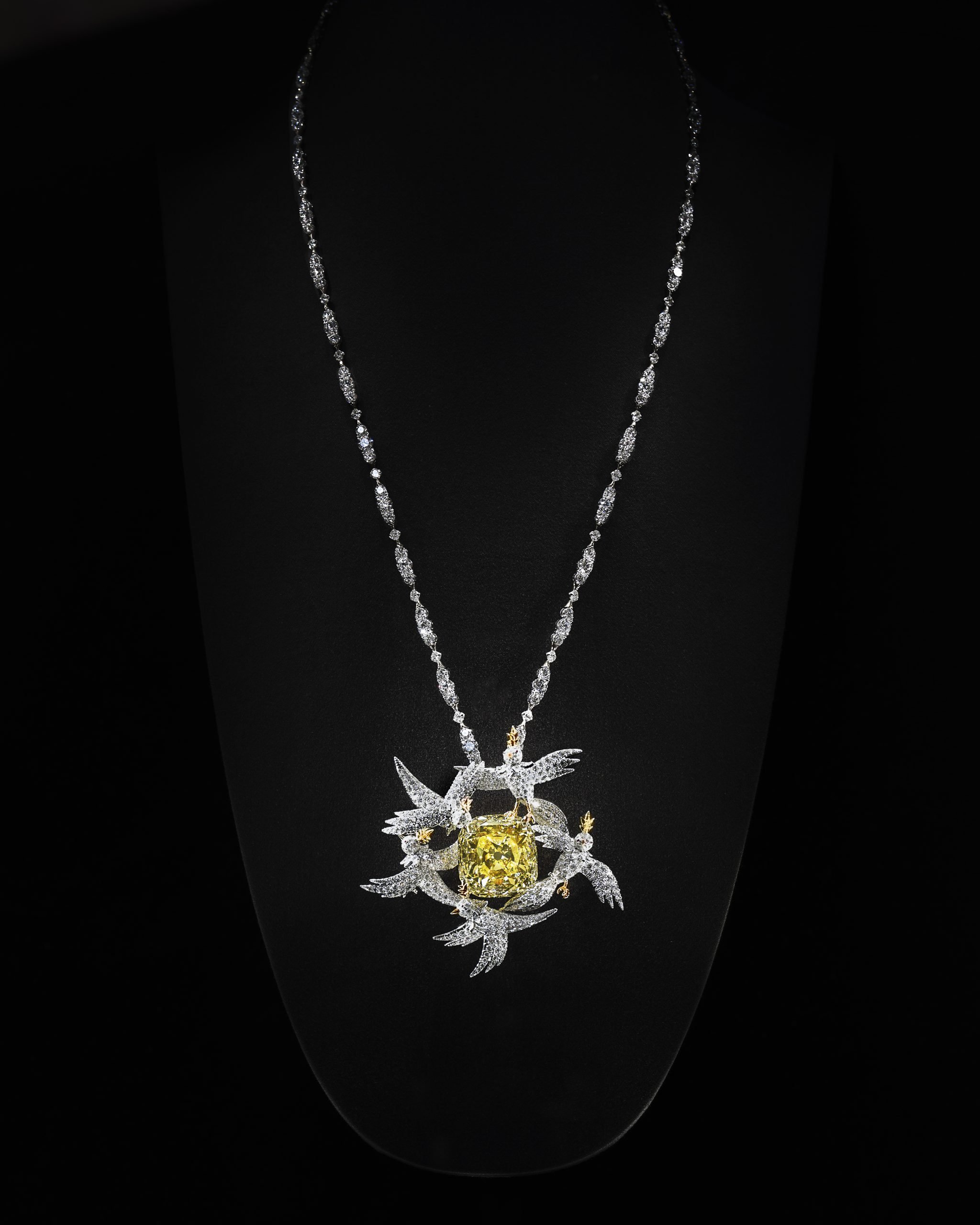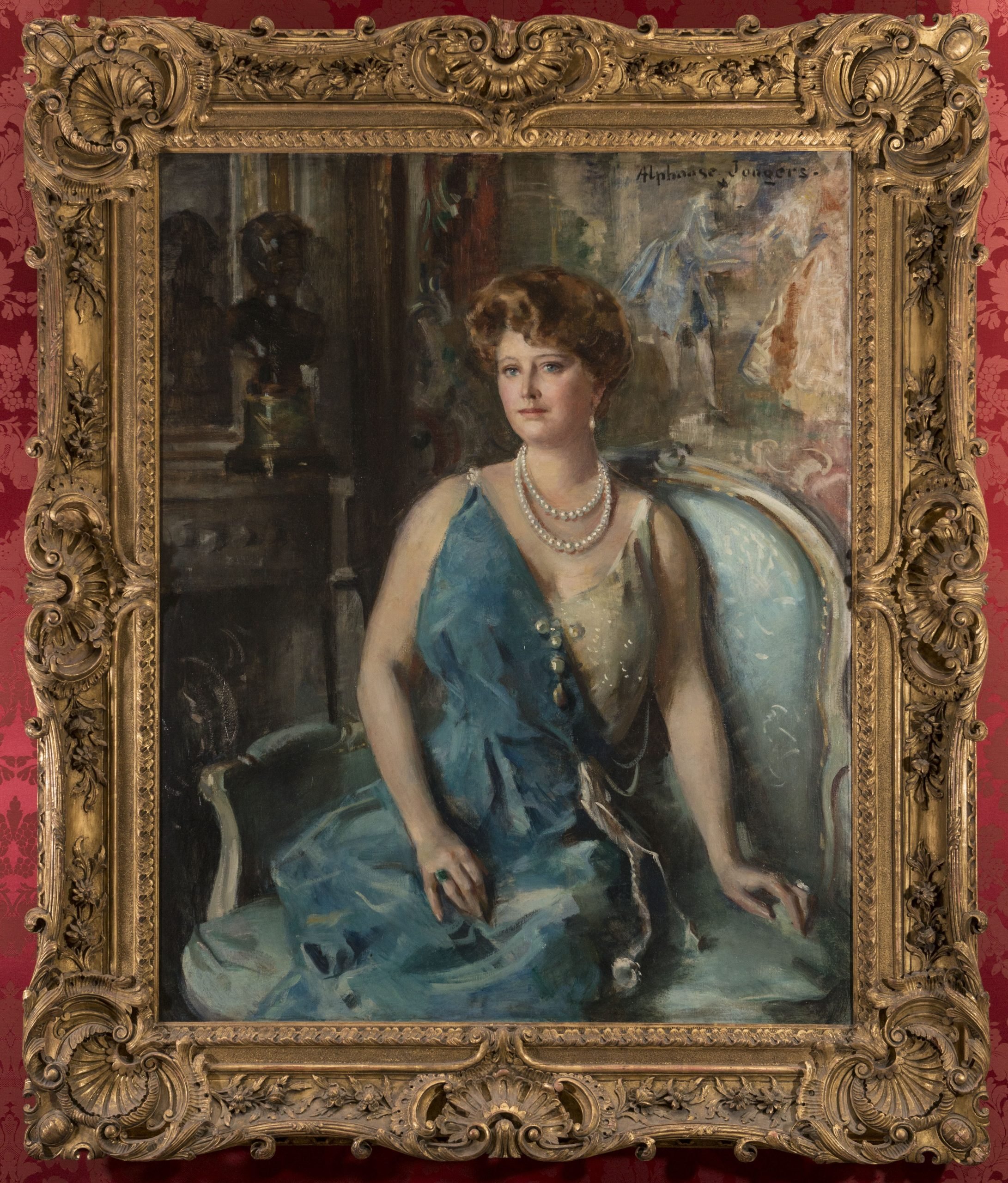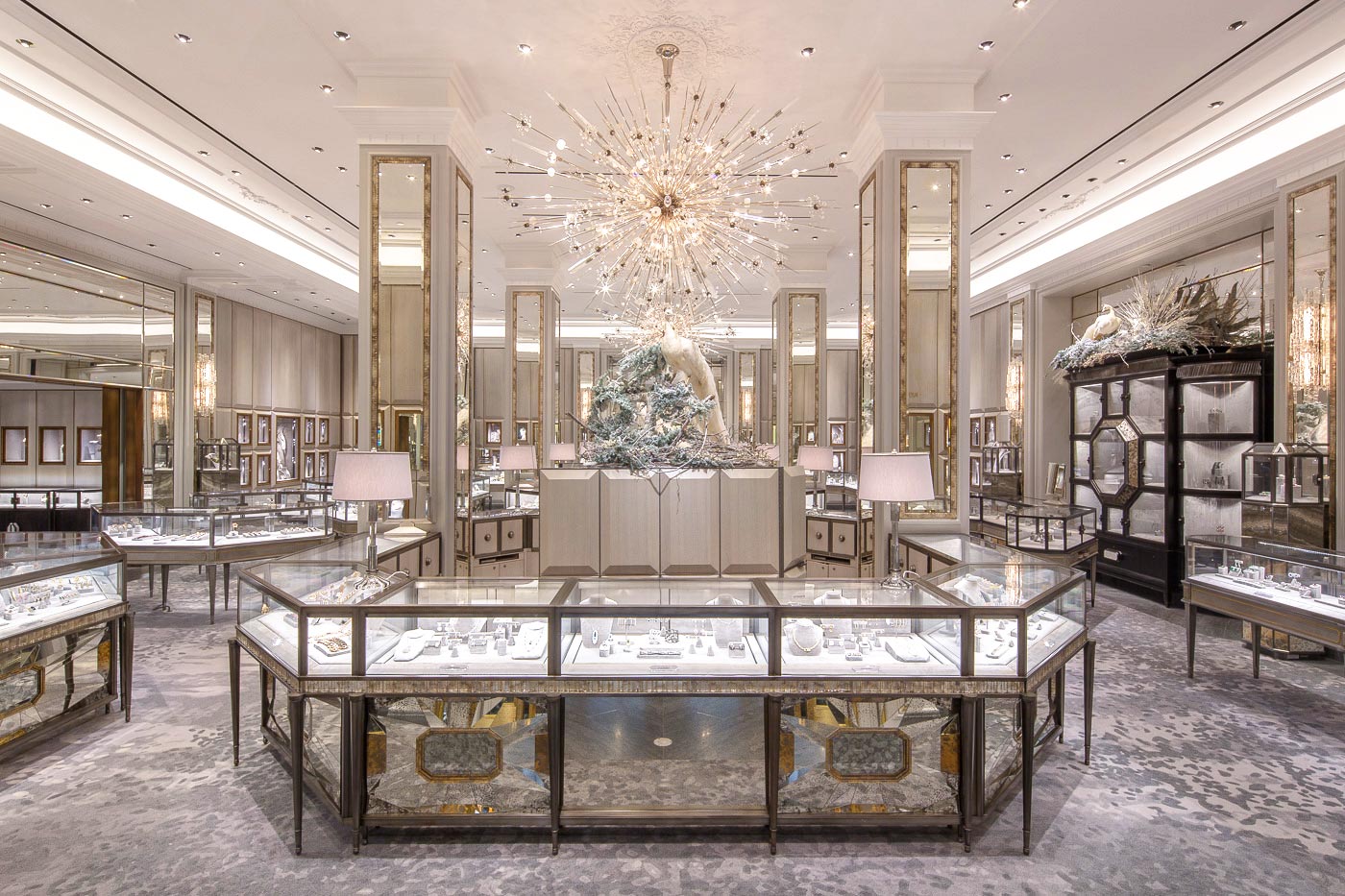When you think of some of the most iconic retail districts in the world, you might imagine London’s Bond Street, Avenue Montaigne in Paris, Via Montenapoleone in Milan, or Rodeo Drive in Los Angeles. Still, New York City’s Fifth Avenue likely tops the list. Today, the street stretches more than 135 city blocks, beginning at Washington Square Park in Greenwich Village and spanning up to 143rd Street in Harlem. This defining thoroughfare was an essential destination that helped put New York City on the map during the Gilded Age and continues to do so today. 2024 will mark the monumental 200th anniversary of Fifth Avenue and the key role it has played in the city’s past, present, and future. In part one of this two-part series, we take a look back at the defining moments that built this emblematic avenue as well as the core retailers who helped establish its reputation as a premier global shopping destination and continue to be mainstays of Fifth Avenue today.
A Dividing Line Between West and East
In the early 1800s, city planners first began to develop New York City’s grid system and wanted to establish a road that would clearly delineate the west and east sides of the city. By 1824, the initial segment of this road, beginning at Washington Square Park, would be called Fifth Avenue. Thanks to the rapid economic growth spurring the Gilded Age, Fifth Avenue would develop into the premier luxury residential area in New York City over the next few decades, reaching up to The Union or what we know today as Union Square. As Fifth Avenue was extended further north, a shift began to happen, and a pivotal moment came in 1870 when Tiffany & Co. moved its store from its original location at 259 Broadway in what is now Tribeca to 15 Union Square West. Tiffany’s would go on to move further north, initially to its first Fifth Avenue outpost at 37th Street and by 1940, to its current flagship at 57th Street.

Tiffany & Co. Paves the Way for Fifth Avenue’s Commercial Development
Tiffany’s was not only the first major retailer to help establish Fifth Avenue as a premier retail district but also one that has continued to be a mainstay of the area for nearly a century. Today, Tiffany & Co. has more than 300 retail stores worldwide, yet its Fifth Avenue location remains the most highly trafficked. Visiting this Fifth Avenue landmark isn’t just about the brand’s exceptional wares—it’s about the experience of visiting this historic destination. In April of this year, Tiffany’s unveiled its first holistic renovation since 1940, marked by custom artwork on each of the eight floors from renowned artists including Damien Hirst, Julian Schnabel, Rashid Johnson, Anna Weyant, and Daniel Arsham as well as never before seen jewelry from the brand’s archives. The flagship is now home to the largest collection of Tiffany High Jewelry in the world, including the biggest wonder of them all—a new design for the legendary 128.54-carat Tiffany Diamond.

Other Key Businesses Follow Suit
Aside from Tiffany’s, there were three other retailers who became key pillars of Fifth Avenue and helped solidify its place as a premier commercial sector. By 1914, Bergdorf’s had evolved from a modest tailor shop in Union Square to Bergdorf Goodman, located at 32nd Street and Sixth Avenue. That year, the store officially relocated to Fifth Avenue between 49th and 50th Streets to what would later become Rockefeller Center. Here, Bergdorf Goodman expanded beyond tailoring and became the first couturier in the States to introduce its own ready-to-wear collection. Over the next decade, Bergdorf Goodman would outgrow its initial Fifth Avenue outpost and move to its permanent home in the present-day location. Since then, Bergdorf’s has been an anchor of Fifth Avenue, occupying the full city block between 57th and 58th streets. The store’s jewelry salon was newly renovated back in 2015 and now features its own private entrance on the first floor. Aside from curating a more intimate, boutique experience overall, the redesign includes private viewing rooms for appointments with Bergdorf’s jewelry experts or designers available for bespoke pieces. About 85% of the assortment in Bergdof’s jewelry department is exclusive to the Fifth Avenue location, including fine jewelry items from makers like Chanel and Bayco that exceed $1 million.

Following Bergdorf’s, Cartier was another core business to further establish Fifth Avenue. In 1917, the illustrious French retailer forged one of the most famous real estate deals in the history of New York City in order to base its flagship on the burgeoning street. The Cartier Mansion is aptly named, once serving as the private residence of Morton Freeman Plant, the son of railroad tycoon Henry B. Plant. Plant agreed to sell the mansion to Pierre Cartier in exchange for $100 cash and a unique double strand pearl necklace, valued at $1 million at the time. In 1970, New York City’s Landmarks Preservation Commission designated the Cartier Mansion as a city landmark, and just last year in 2022, the store received a complete redesign with the goal of making the space less commercial and more congenial in the spirit of the building’s residential origins. Just like Tiffany’s, visiting the Cartier Mansion is about more than just shopping, it’s about having an experience. Here, you’ll find the largest collection of Cartier jewelry in the world, including a number of pieces exclusive to the Fifth Avenue boutique. You’ll also find exclusive offerings, like a private dining room for VIPs and in the engagement salon, the ability to watch your stone be physically set into your ring at the hand of Cartier’s skilled artisans who work onsite. In addition, you’ll find a painting of Plant’s wife Maisie donning the famous pearl necklace hanging prominently.

Into the 1920s, one more retailer would go on to cement the growing prominence of Fifth Avenue in a monumental way. For two decades, a large multi-branch clothing store called Saks & Co. had its New York City outpost at the corner of 34th Street and Broadway in the heart of Herald Square. In 1923, the company merged with the department store Gimbels and opened a new flagship on Fifth Avenue spanning an entire city block between 49th and 50th Streets right next to the iconic St. Patrick’s Cathedral. With the new location came a new name—Saks Fifth Avenue—taking the distinction of the location to the next level by including the name of the street in the name of the business itself.
More Than a Retail Destination, a Holiday Destination
The period of economic prosperity in the early 1900s marked the rise of Firth Avenue as a top luxury shopping destination. However, its growth was stunted by the Great Depression. During this time, much of the development of Fifth Avenue halted, but there was one important turn of events. Prior to the stock market crash, the Metropolitan Opera had been slated to develop a new facility on Fifth Avenue between 49th and 50th streets in an area owned by Columbia University. With the onset of the economic downturn, their plans were foiled, and John D. Rockefeller Jr. opted to purchase the land instead. This development would become one of the greatest projects of the Great Depression, ultimately resulting in Rockefeller Center. The complex was key to establishing Fifth Avenue as not only a retail destination but also a holiday destination. In December of 1931, as workers came to collect their final paychecks, they brought their families and erected a tree in the center of the construction site. This inspired Rockefeller to begin the tradition of the famed Rock Center Christmas Tree each holiday season.
Fifth Avenue Continues to Evolve into the Premier Commercial District We Know Today
As the nation rebounded from the Great Depression and the economy began to recover, so did the commerce of Fifth Avenue. Over the next few decades, we would see luxury retailers like Van Cleef & Arpels, Harry Winston, and Bulgari establish their U.S. flagships on the famed street. By 1971, New York City’s mayor John Lindsey had proposed a special zoning district to preserve the retail character of Fifth Avenue’s midtown section. The legislation dictated that new buildings on Fifth Avenue must house a minimum percentage of retail space. In addition, it provided certain incentives for buildings that offered more than the minimum amount of retail. This legislation also spurred the construction of the mixed use buildings that are prevalent throughout New York City today, offering retail on the ground level and office space or residential space on the top stories.
In the decades to follow, more and more luxury retailers would continue to flock to Fifth Avenue, including mainstays like Wempe and Louis Vuitton. Even today, Fifth Avenue’s commercial space remains highly coveted for top brands with new openings each year such as TAG Heuer in the summer of 2023, Chanel’s High Jewelry boutique in 2024, and Rolex in 2025. Let’s continue exploring the modern evolution of Fifth Avenue and the exceptional offerings and experiences from today’s retailers that make this destination truly remarkable 200 years later in part two of this series–stay tuned!












